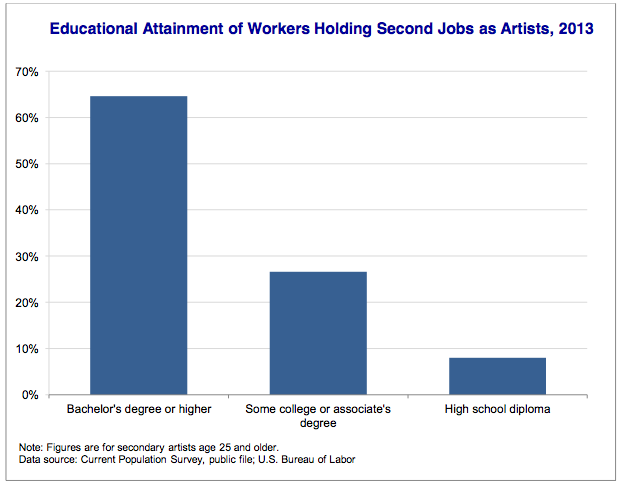Sample Findings
In 2013, 2.1 million workers held primary positions as artists. (A primary job is defined as one at which the greatest number of hours were worked.) In that same year, an estimated 271,000 workers also held second jobs as artists.
Secondary artist employment accounted for roughly 12 percent of the total number of artist jobs in 2013.
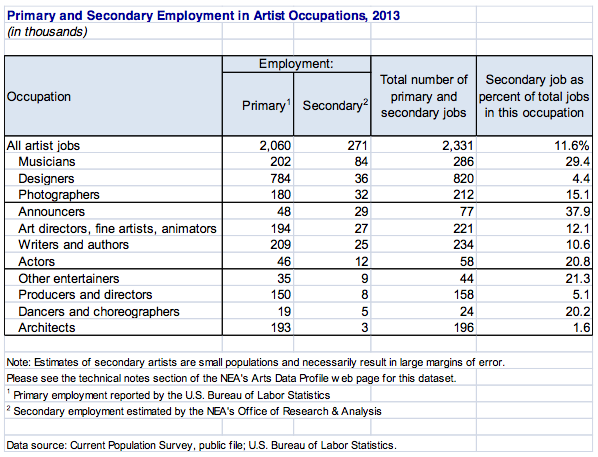
Musicians rank first in number of secondary artist jobs held (84,000 in 2013), while workers holding second jobs as announcers represent the greatest share of the total number of jobs in artist occupations (nearly 38 percent in 2013).
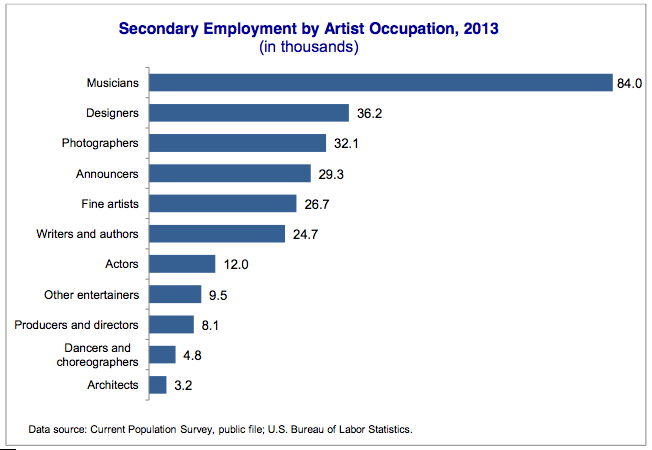
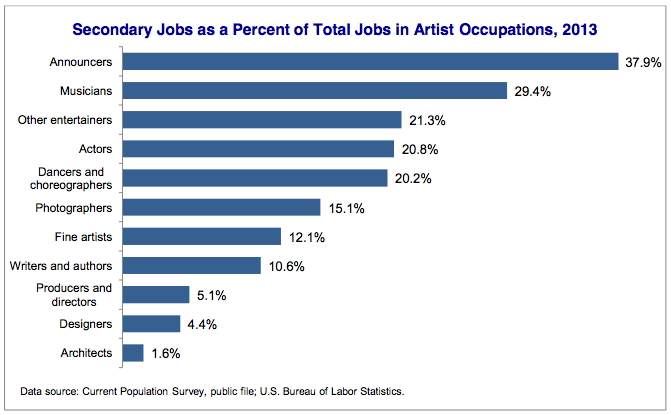
Hours Worked
Most workers who hold secondary artist jobs work full time (at least 35 hours a week) at their primary jobs. In 2013, secondary artist jobholders typically worked a 46-hour workweek in their primary and second artist jobs, combined.
By contrast, workers holding one artist job in 2013 usually worked 37 hours per week, a slightly shorter workweek than the 39 hours per week usually filled by all workers with one job.
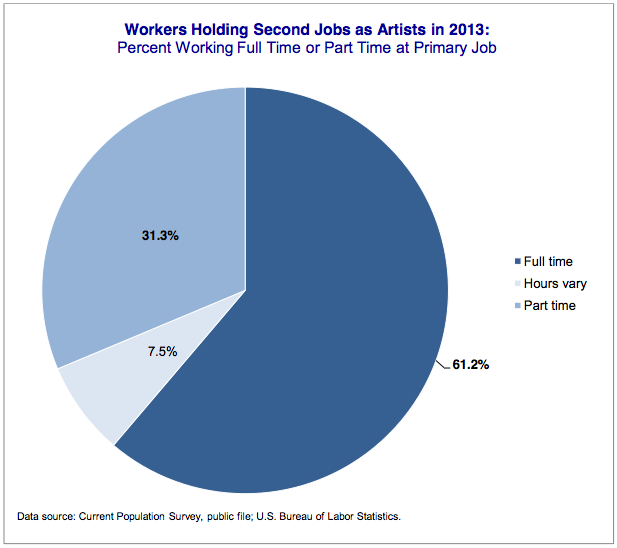
Primary Job of Moonlighting Artists
Nearly half of U.S. workers holding second jobs as artists have primary jobs that qualify them as "professional workers," a Bureau of Economic Analysis occupational category encompassing jobs that usually require college training. In addition to teachers and artists, professional occupations include doctors, lawyers, social workers, clergy, and librarians.
In 2013, teachers (post-secondary, secondary, and "other" teachers such as those at music and dance schools) composed nearly 21 percent of all workers holding second jobs as artists; another 18 percent of secondary artists were also artists in their primary jobs.
Estimates by industry group also reveal the professional jobs nature of the primary jobs held by secondary artists. In 2013, for instance, 30 percent of all workers holding second jobs as artists were employed in their primary jobs by the education and health services industry, which includes colleges, high schools, and local music and dance schools.
Professional and business services, an industry group including specialized design services firms (e.g., interior and graphic design), account for 14 percent of the primary jobs of workers who moonlight as artists.
Leisure and hospitality, which includes the performing arts and independent artists as distinct industry groups, employ 13 percent of secondary artist jobholders.
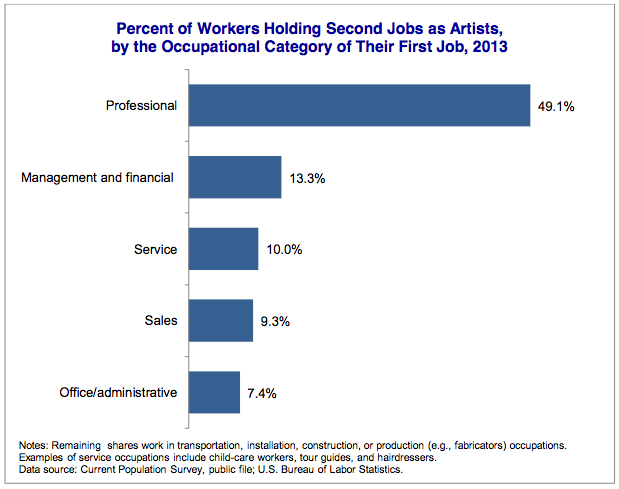
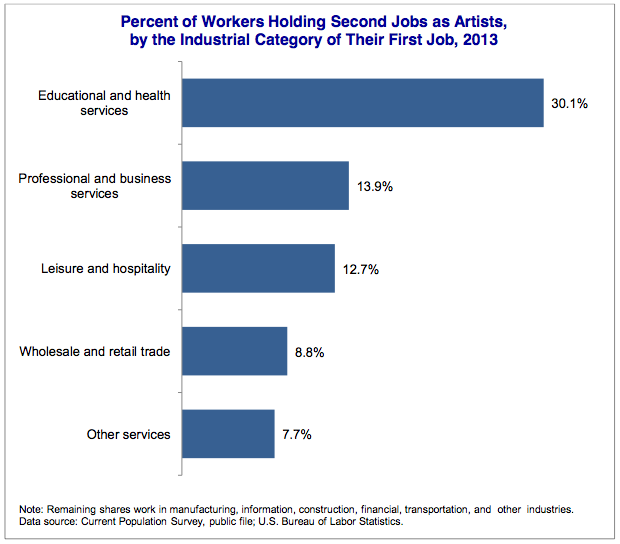
Class of Worker
Of the 271,000 workers holding second jobs as artists in 2013, more than 60 percent were self-employed. That rate was considerably greater than the 35 percent of primary artists who were self-employed, and the self-employment rate of 10 percent among all U.S. workers.
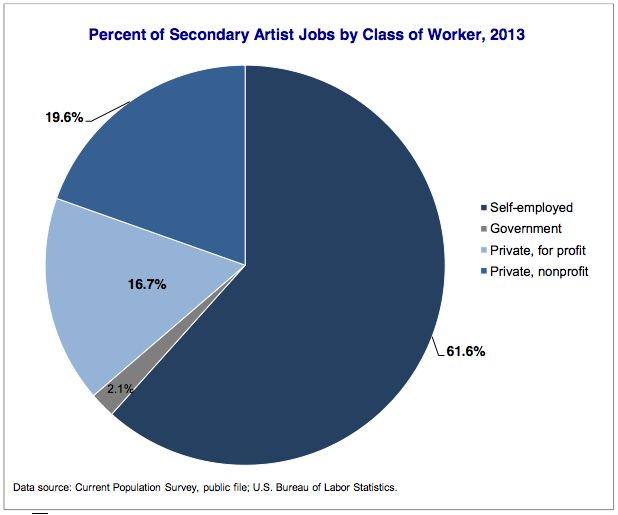
Demographics of Secondary Artists
Due to the small population of secondary artists (271,000 in 2013), detailed estimates of their demographic characteristics have a wide margin of error. However, a few basic demographics may be examined, including gender, marital status, age, and educational attainment.
Secondary artists mirror primary artists, as well as all workers in the U.S. labor force, in several categories:
- Men account for roughly 55 percent
- Half are married
- Median age is 41
However, artists, both primary and secondary, are better educated than the overall labor force:
- 65 percent of primary and secondary artists hold bachelor's degrees or higher levels of education
- 32 percent of all U.S. workers hold college degrees
(Note: Figures apply to workers age 25 and older.)
